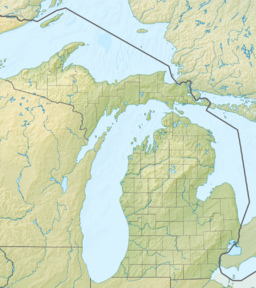| Chicaugon Lake | |
|---|---|
| Location | Iron County, Michigan |
| Coordinates | 46°03′37″N88°30′09″W / 46.0603818°N 88.5025366°W [1] |
| Type | Lake |
| Primary outflows | Chicagon Creek |
| Basin countries | United States |
| Surface area | 1,100 acres (4.5 km2) [2] |
| Max. depth | 115 ft (35 m) [2] |
| Surface elevation | 1,430 ft (436 m) [1] |
Chicagon Lake is a small lake in Iron County, Michigan. It is part of the Paint River watershed. Pentoga Park is located along its southern edge.

